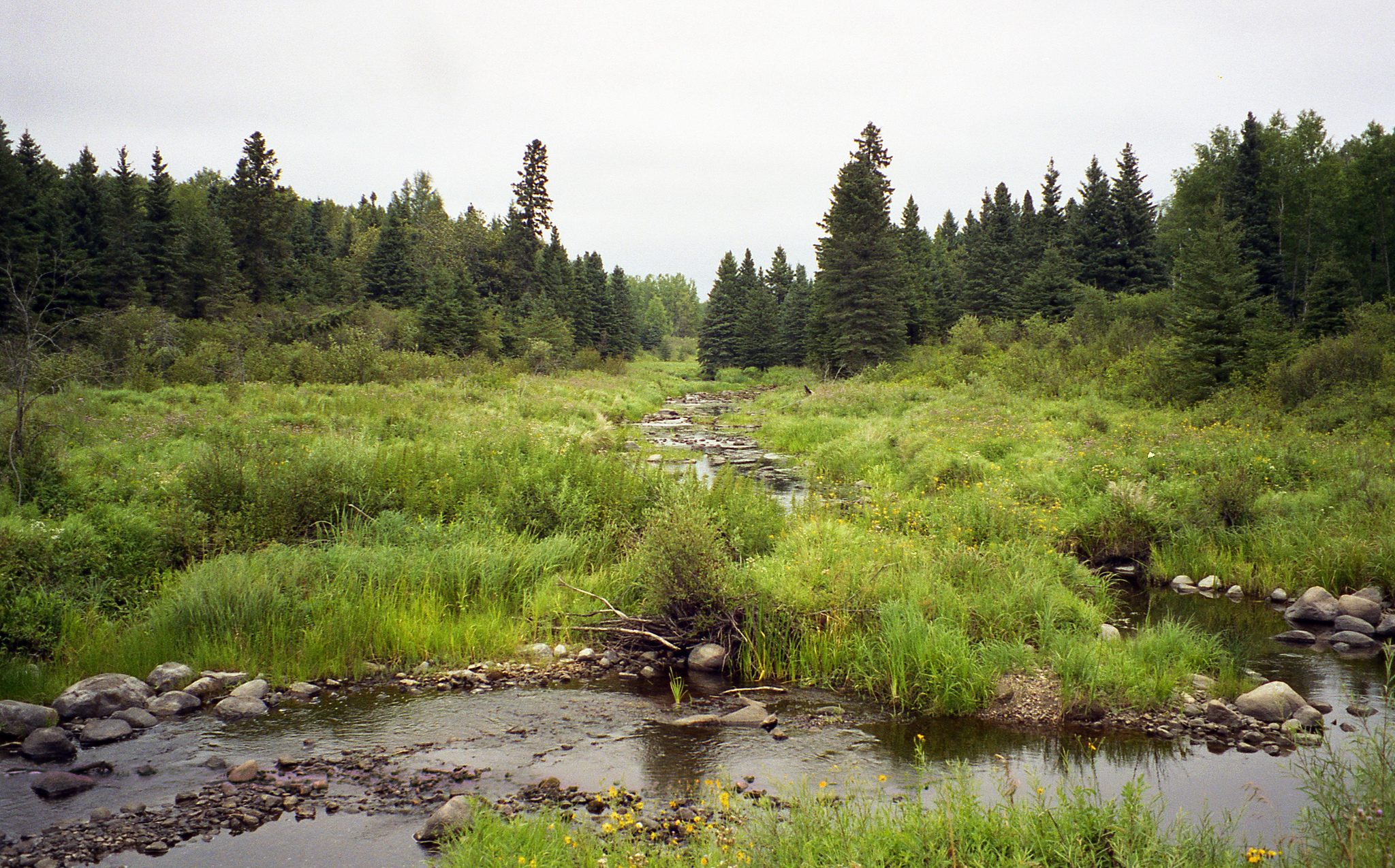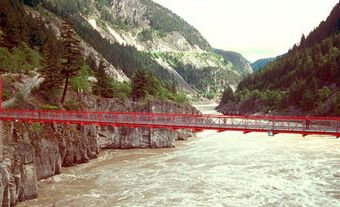
Biosphere Reserves in Canada
Designation of a biosphere reserve does not confer any legal status under Canadian law. People and agencies participate in biosphere reserve activities on a voluntary basis, and local communities generally co-ordinate these activities. National co-ordination is provided by a non-profit organization, the Canadian Biosphere Reserves Association. There are 18 biosphere reserves in Canada.
|
Name, Location |
Year Est. |
Description |
| Mont-Saint-Hilaire, Quebec | 1978 | Mont-Saint-Hilaire is located about 32 km east of Montreal. The area is home to some of the last old-growth deciduous forests in the province, which is, in turn, home to many rare and endangered species. The biosphere reserve includes a rich agricultural area on the Richelieu River, as well as a large urban region. |
| Waterton, Alberta | 1979 | The biosphere reserve contains Waterton Lakes National Park, ranch land and forest areas. The biosphere reserve has carried out many research and education projects on wildlife and ranching issues. Waterton is also a key part of the Yellowstone-to-Yukon corridor for wildlife migration. |
| Long Point, Ontario | 1986 | Biosphere reserve is based on a 32-km peninsula in Lake Erie. It includes a national wildlife area, small towns, farms, forests and recreation areas. The biosphere reserve is also home to some of the largest remaining tracts of Carolinian forest in the country, and a stopover point for many migratory birds. |
| Riding Mountain, Manitoba | 1986 | Biosphere reserve contains Riding Mountain National Park and almost a million hectares of surrounding land, primarily agricultural. Reserve activities include educational workshops for farmers and studies of landscape change and habitat. |
| Charlevoix, Quebec | 1989 | Biosphere reserve is located on the St Lawrence River and includes tidal marshes, mixed forests and mountain ecosystems. The economy is based on tourism, farming and forestry. |
| Niagara Escarpment, Ontario | 1990 | Biosphere reserve extends 725 km from the Niagara River to the end of the Bruce Peninsula. It contains federal and provincial protected areas, as well as recreation areas. Biosphere reserve activities include monitoring, tourism and education. |
| Clayoquot Sound, BC | 2000 | Biosphere reserve is on the west coast of Vancouver Island, and contains national and provincial parks and marine areas. The reserve’s temperate rainforests, water bodies and mountains are home to a number of endangered and rare species. |
| Redberry Lake, Saskatchewan | 2000 | Biosphere reserve is an agricultural area containing a federal migratory bird sanctuary and a provincial wildlife area. Redberry Lake itself is a salt water lake in an area otherwise characterized by freshwater. |
| Lac Saint-Pierre, Quebec | 2000 | Lac Saint-Pierre is an enlargement of the St Lawrence River that is surrounded by the largest freshwater floodplain in Quebec. The biosphere reserve consists of a Ramsar site (i.e. a wetland of international importance) and urban, agricultural and industrial areas. |
| Mount Arrowsmith, BC | 2000 | Biosphere reserve is on the eastern side of Vancouver Island and consists of temperate forest and important migratory bird habitat. Its core area includes provincial parks and national and provincial wildlife management areas. |
| Southwest Nova, Nova Scotia | 2001 | Biosphere reserve includes the five counties of southwestern Nova Scotia. Its core conservation area consists of two contiguous natural areas: Kejimkujik National Park and Historic Site and the Tobeatic wilderness area. Activities include promoting sustainable forestry, tourism and other developments. |
| Frontenac Arch, Ontario | 2002 | The biosphere reserve is located in southeastern Ontario. The arch itself is a ridge of granite joining the Adirondack Mountains to the Canadian Shield. Where the ridge passes through the eastern portion of Lake Ontario and the beginning of the St Lawrence River it creates the Thousand Islands. Five forest regions are found within the biosphere reserve area, making it one of the most biodiverse locations in Canada. |
| Georgian Bay, Ontario | 2004 | The reserve encompasses the world’s largest freshwater archipelago. It includes numerous habitats such as islands, coves, open water and bedrock shores. Taken together, these habitats are home to over 100 species at risk. Georgian Bay is also home to a vibrant tourist industry. |
| Manicouagan Uapishka, Quebec | 2007 | The biosphere reserve extends north from the St Lawrence River at Baie Comeau, Quebec. The area features a circular lake created by a meteorite. Salt marshes in the region provide a resting spot for over 200 species migratory birds. Economic activity in the region includes forestry, agriculture, mining and commercial fisheries. |
| Fundy, New Brunswick | 2007 | Located in New Brunswick, the biosphere reserve extends north from the Bay of Fundy and includes Fundy National Park. The area is known for its mixed Acadian forests, extreme tides, and salt marshes. The reserve also includes the Greater Moncton area. |
| Bras d’Or Lake, Nova Scotia | 2011 | The biosphere reserve surrounds Bras d’Or Lake on Cape Breton Island, Nova Scotia. The lake is actually an estuary where fresh and salt water mix. The lake’s watershed makes up the rest of the biosphere reserve, including wetlands and bogs. Located on the traditional territory of the Mi’kmaq, the biosphere encompasses four of Cape Breton’s five Mi’kmaq reserves. |
| Beaver Hills, Alberta | 2016 | Located east of Edmonton, the biosphere reserve area is characterized by its moraines (i.e. deposits of sediment left behind by glaciers). The landscape also includes mixed forest, grasslands and wetlands, and is home to bison, deer, moose and elk. Agriculture and recreation are the dominant economic activities. |
| Tsá Tué, Northwest Territories | 2016 | The biosphere reserve is on the traditional territory of the Sahtu Got’ine, or Bear Lake people and includes Great Bear Lake. The region is characterized by boreal forest and taiga, and is home to muskox, moose and caribou. The only humans in the biosphere reserve area live in Déline, a small community on the shores of Great Bear Lake. |

 Share on Facebook
Share on Facebook Share on X
Share on X Share by Email
Share by Email Share on Google Classroom
Share on Google Classroom


